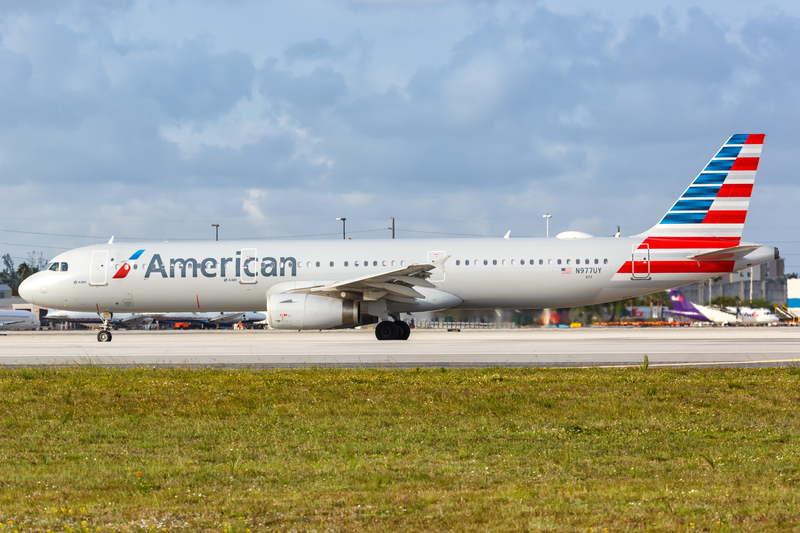Report Of Fumes On American Airlines Flight Sends 5 To Hospital
Five people were taken to hospital as a precaution after reports of fumes onboard an American Airlines flight from Orlando to Phoenix. Four flight attendants and one passenger were transported after the aircraft diverted safely to Houston.
Flight Diverts To Houston After Odor Reported
On Sunday, November 23, American Airlines flight AA2118 was operating from Orlando International Airport (MCO) to Phoenix Sky Harbor International Airport (PHX) when the crew reported an odor and possible fumes onboard.
The flight was operated by a 10-year-old Airbus A321-200, registered N139AN, configured to seat up to 190 passengers. While cruising over the Gulf of Mexico, the crew reported fumes in both the flight deck and cabin and requested a diversion.
The aircraft turned toward Houston George Bush Intercontinental Airport (IAH) and landed safely approximately 3 hours 30 minutes after departing Orlando.
Flight details:
-
Flight number: AA2118
-
Date: November 23, 2025
-
Route: Orlando (MCO) – Phoenix (PHX)
-
Aircraft: Airbus A321-200 (N139AN)
-
Outcome: Diverted to Houston (IAH) due to fumes in cockpit and cabin
The FAA has confirmed it is investigating the incident after the crew reported fumes on board.
Five People Taken To Hospital
Emergency services met the aircraft on arrival in Houston. Out of an abundance of caution, four flight attendants and one passenger were transported to a local hospital for evaluation.
Radio transmissions between the cockpit and air traffic control captured the seriousness of the situation, with one of the pilots requesting multiple ambulances on arrival and saying:
“I’m gonna have some transports here out of the airport on this. I’m gonna need probably four transport units.”
At the time of writing, there has been no public update on the condition of those taken to hospital. American Airlines is expected to inspect the aircraft and cooperate fully with the FAA investigation.
What Exactly Is A Fume Event?
Fume events are one of the more common reasons an aircraft may divert and can range from mild to very serious. They typically involve unusual odors, haze, or visible smoke in the cabin or cockpit.
These events usually occur when contaminants such as:
-
Engine oil
-
Hydraulic fluid
-
De-icing or cleaning chemicals
enter the bleed-air system that supplies fresh, pressurized air to the cabin. When this happens, passengers and crew may inhale potentially toxic fumes.
Reported symptoms can include:
-
Headaches and dizziness
-
Nausea and vomiting
-
Confusion or impaired thinking
-
In severe cases, loss of consciousness
Because prolonged exposure can be dangerous, pilots are trained to treat strong or persistent odors as a safety risk and will typically divert and land as soon as practical, even if the exact source is not immediately clear.
Why Crew Are Often Hit Hardest
Flight attendants and pilots often suffer the most from fume events. One medical study has suggested that this is linked to their pre-exposure to thousands of hours of low-dose engine bleed air, which may make them more vulnerable when a high-dose event occurs.
While passengers may only encounter a single event in their lifetime, crew can experience multiple exposures during their careers, making the long-term health impact a serious concern. Reported issues include:
-
Persistent fatigue
-
Neurological symptoms
-
Breathing difficulties
-
Cognitive issues after severe or repeated exposure
Industry Response To Rising Fume Reports
Recent investigations have highlighted that fume events appear to be increasing, particularly on certain aircraft types. Airbus A320-family aircraft, including the A321, have been involved in a disproportionate number of reported events compared to some other models.
In response, manufacturers and airlines have been:
-
Upgrading engine oil seals to reduce the risk of leaks
-
Improving air conditioning and filtration systems
-
Updating maintenance procedures and inspection intervals
-
Collecting more structured health and incident data from crew
Only last month, another American Airlines A321 operating from Los Angeles turned back shortly after departure when toxic fumes were reported onboard, underscoring that this is not an isolated issue.
Despite this, it’s important to note that serious fume events are still rare when viewed against the huge number of daily flights worldwide. Diversions like AA2118 are part of a conservative safety culture that prioritizes precaution over schedule.
Bottom Line
American Airlines flight AA2118 from Orlando to Phoenix diverted to Houston after fumes were reported in the cockpit and cabin, leading to four flight attendants and one passenger being taken to hospital as a precaution. The Airbus A321-200 landed safely, and the FAA has opened an investigation into the incident.
While fume events remain relatively uncommon, they are being reported more frequently and can have serious health implications, especially for crew members who are regularly exposed to low-level contaminants. This latest diversion highlights why airlines and manufacturers are under growing pressure to better understand, prevent, and manage cabin air quality issues.






